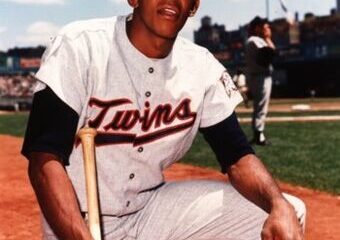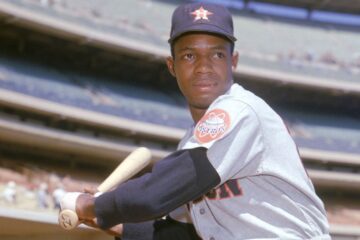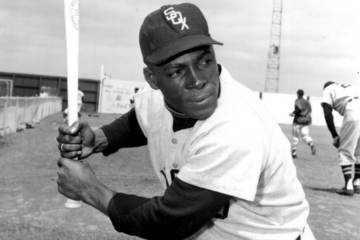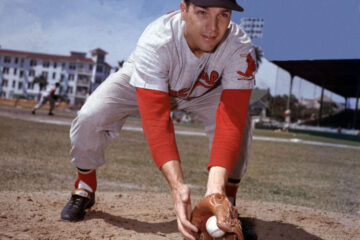The Hall of Fame Index: What about Bill Freehan?
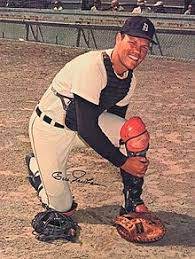
We are going through the candidates that could appear on the Veterans Committee ballot in 2020-2021. The rules are different. They have split the sport into eras. The era this year will be 1950 to 1969. Obviously, there will always be overlap, so we are picking players that played at least half of their careers during that time. The rules state that once ten names are selected, the committee may vote for as few as zero and as many as four. We’ve already covered Gil Hodges who will almost certainly be on the ballot.
My second name may or may not get on the ballot, but based on his index score and ranking at his position he should get a nomination. Now, whether he is one of the four that would deserve a vote is a completely different question. This player has always been of interest to me because he is so comparable to other players at this position. Like with Hodges, we will take the two names ahead of him and behind in JAWS and compare them via the index. Our player today is Bill Freehan.
Career Value
| BWAR | FWAR | WS/5 | Total | |
| Buck Ewing | 47.9 | 48.1 | 48.2 | 144.2 |
| Bill Freehan | 44.7 | 44.8 | 53.4 | 142.9 |
| Gene Tenace | 46.8 | 45.0 | 46.2 | 138.0 |
| Wally Schang | 47.9 | 41.0 | 49.0 | 137.9 |
| Jorge Posada | 42.7 | 40.4 | 51.6 | 134.7 |
The index works pretty much the same way as JAWS and similarity scores. They aren’t supposed to be used to definitively rank order players. We use them to put players into similar groups. Ewing is in the Hall of Fame, so that immediately puts Freehan in better company than we saw with Gil Hodges. However, Ewing’s case is particular in nature. He played at a time when schedules were considerable shorter. So, his WAR and win shares totals reflect that.
Baseball Prospectus used to use a formula they called Wins above replacement player three (WARP3) where they adjusted the WARP score to approximate what would happen in a 154 or 162 game season. It was even a part of an earlier version of the index. The trouble is that they no longer calculate that and even if they did we would be giving him credit for numbers he didn’t produce. How do we know he wouldn’t have broken down in a longer season?
The idea here is that these players are all similar in value. We could conceivably rank order them any way we wanted. Here we are rank ordering them based on the index. The question is not whether Freehan is better than any or all of them. The question is whether any of them deserve to be Hall of Famers. If some do then maybe Freehan has a case. If none of them outside of Ewing deserve to be in then it is likely Freehan doesn’t either.
Peak Value
| BWAR | FWAR | WS/5 | Total | Index | |
| Tenace | 42.5 | 40.1 | 41.0 | 123.6 | 262.6 |
| Posada | 39.7 | 41.5 | 43.0 | 124.2 | 258.9 |
| Freehan | 35.8 | 36.9 | 42.6 | 115.3 | 258.2 |
| Ewing | 36.8 | 36.9 | 35.8 | 109.5 | 253.7 |
| Schang | 34.6 | 29.0 | 32.6 | 96.2 | 234.1 |
Schang is one of the reasons why we use peak value. In the case of the index, peak value is defined as the top ten consecutive seasons of a player’s career. Schang’s career value is relatively high because he played a long time. The peak value indicates that he was a solid enough player, but either wasn’t good for particularly long or was never really good at any point.
As we noted earlier. Ewing would have fared better had he been able to play a full complement of games. It is likely he would have averaged maybe an additional win a season. An extra 30 wins in both career and peak value would have thrown him over 300 index wins. So, we can remove those two guys from consideration. The other three are very close in terms of peak value and overall index value. When we break down their offensive and fielding numbers we will see whether Freehan really deserves Hall of Fame consideration.
Offensive Numbers
| OPS+ | Rbaser | OW% | wOBA | |
| Tenace | 136 | -14 | .665 | .373 |
| Ewing | 129 | 25 | .661 | .372 |
| Posada | 121 | -34 | .595 | .367 |
| Schang | 117 | 2 | .604 | .380 |
| Freehan | 112 | -7 | .591 | .339 |
Keep in mind that Freehan is the only player here eligible for the ballot. I could easily dive into Tenace’s qualifications based on these results, but that will have to be a different article for a different time. It would appear that Freehan’s chances get torpedoed based on these numbers, but he also is the kind of player you picture when you picture a catcher. Tenace doesn’t fit that description and the others have obvious weak points we will get to shortly.
One of the things you have to remember about OPS+ is that it is a MLB universe statistic. You are compared to first basemen, outfielders, and the rest of the infield. A 112 OPS+ actually ranks higher in comparison with other catchers than what you might think. Naturally, it still a black mark against him that he finishes last in this grouping across the board.
Fielding Numbers
| Rfield | DWAR | TZC | DW/5 | |
| Ewing | 78 | 9.7 | 58 | 11.1 |
| Freehan | 28 | 12.0 | 26 | 17.9 |
| Schang | 5 | 6.5 | -11 | 12.3 |
| Tenace | -8 | 1.8 | -6 | 8.3 |
| Posada | -60 | 2.6 | -87 | 13.3 |
Freehan and Posada are the only ones to spend their entire career catching. No one would ever accuse them of being equals defensively. If Posada were admitted into the Hall of Fame he likely would be the worst defensive catcher in the Hall of Fame. Someone has to hold that honor I guess, but it is likely that his shortcomings are keeping him out. Freehan was a solid defensive catcher, but he wouldn’t be at the top in Cooperstown. He also wouldn’t be at the bottom.
The same would be true for him offensively. His best case is that he fits somewhere near the middle of the pack in both categories. The flip side is that he really doesn’t have an area in his game where he excels. He is a solid overall player. Solid overall players can have impressive value, but as we will see, he didn’t exactly excel.
Playoff Numbers
| PA | SLASH | HR | Runs | RBI | |
| Posada | 492 | .248/.358/.387 | 11 | 53 | 42 |
| Tenace | 146 | .158/.338/.289 | 4 | 10 | 14 |
| Schang | 111 | .287/,362/.404 | 1 | 8 | 9 |
| Ewing | 65 | .290/.323/.468 | 1 | 1p | 13 |
| Freehan | 41 | .139/.225/.278 | 1 | 2 | 5 |
Playoff numbers are what we would refer to as extra credit. Playoff numbers are not an official part of the index. However, we cannot deny that how players perform in the postseason should have an impact in how they are viewed in Hall of Fame talk. None of the players absolutely killed it in the postseason and Freehan looks like his reputation takes a hit. However, he only had 41 plate appearances and his Tigers did win the 1968 World Series.
Tenace is a more complex case. He was a part of three World Championships in Oakland despite his paltry numbers. So, that’s obviously a mixed bag. The biggest postseason resume belongs to Posada. He got the benefit of multiple playoff rounds while playing on four World Championship teams in New York. It could be enough to throw him over the top some day when the Veterans Committee gets around to looking at modern players again.
BWAR MVP Points
| Top 10 | Top 5 | MVP | Points | |
| Ewing | 5 | 1 | 0 | 20 |
| Freehan | 2 | 1 | 0 | 11 |
| Tenace | 3 | 0 | 0 | 9 |
| Posada | 0 | 1 | 0 | 5 |
| Schang | 1 | 0 | 0 | 3 |
BWAR MVP points are really another way of looking at peak value. They show us that Ewing was better than his numbers show because those players played in fewer games. Yet, there is Freehan just a little ahead of Tenace. In the grand scheme of things, two points is not a lot when look at the MVP points. So, in terms of value they are nearly identical. I generally detest the “if…then” argument. However, the two could be linked together in terms of overall value.
As for Freehan, it will be tough to place a vote for him if you have only four votes to make. As we get through the other names that could/should be on the Veterans Committee ballot you will see why. However, I firmly believe he should be on the ten names on the list. It will be an interesting discussion this winter and he deserves to be a part of it.


